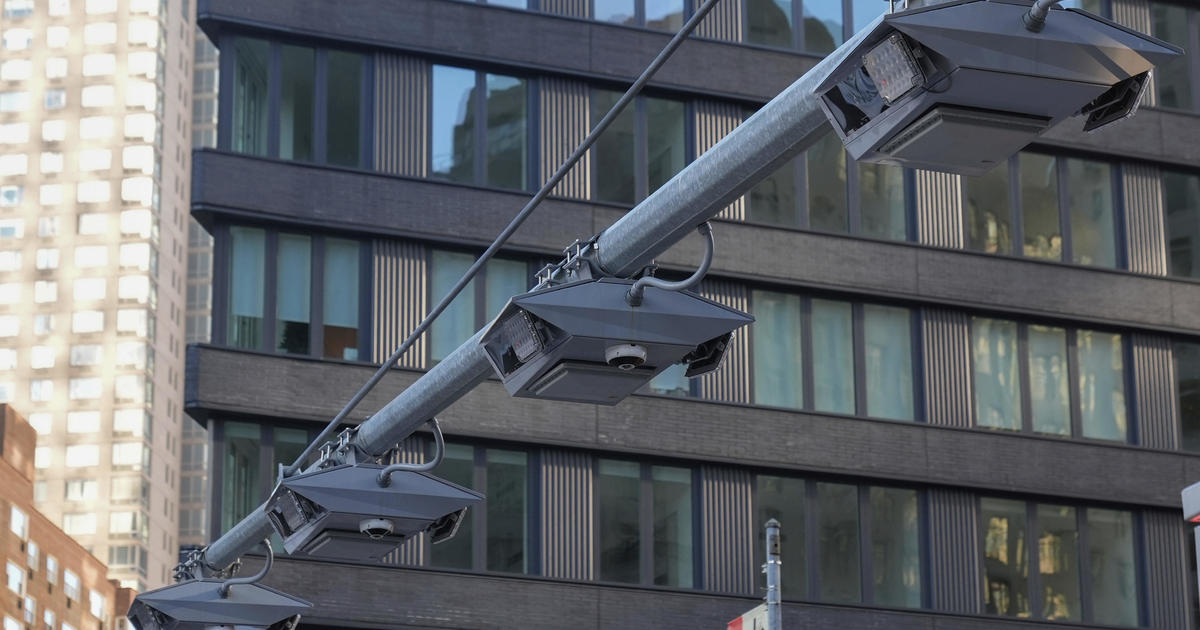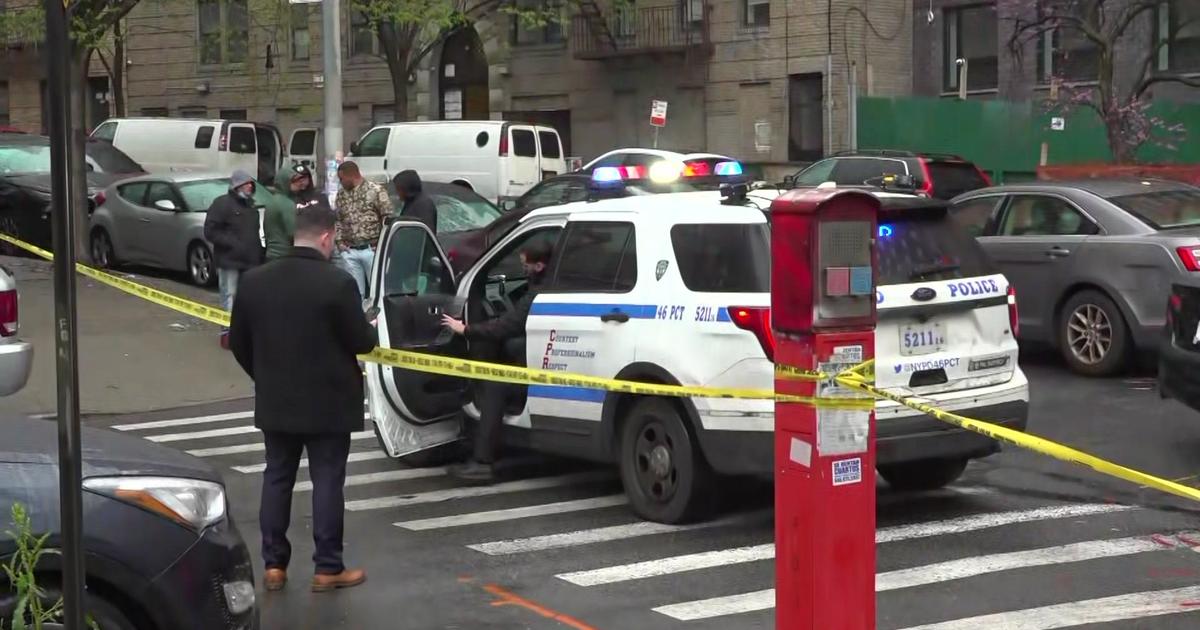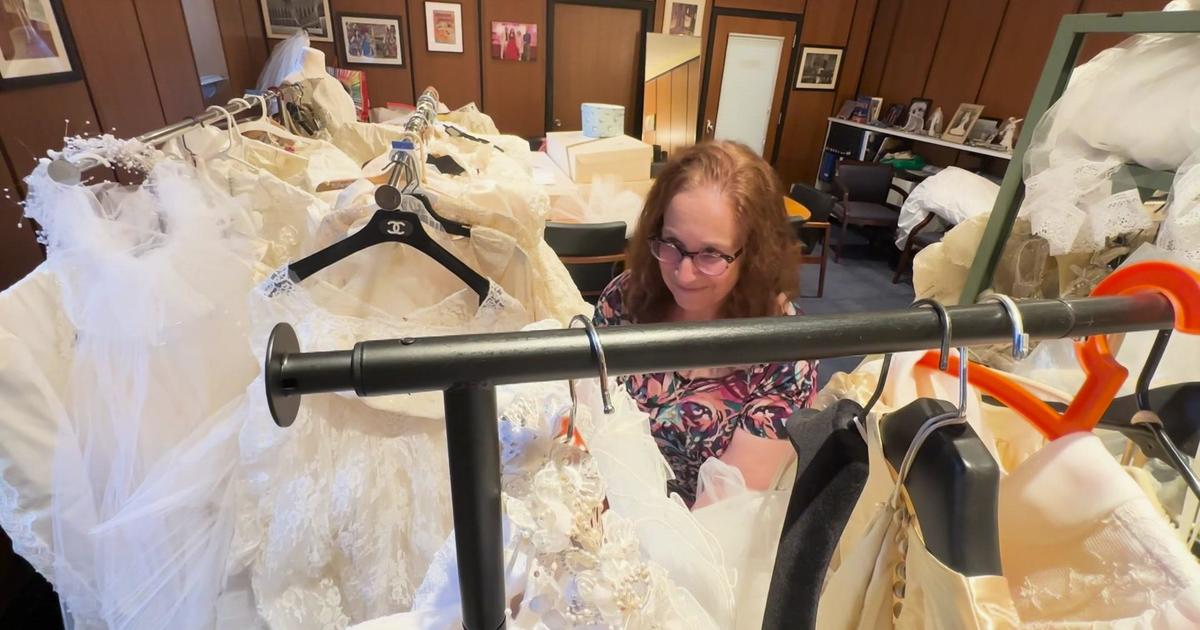New Yorkers Await Fate Of Loved Ones As Nepal Earthquake Death Toll Soars Past 4,000
KATHMANDU, Nepal (CBSNewYork/AP) -- It's been an agonizing wait as people in our area wait for word on loved ones in Nepal.
Inside one Buddhist temple in Jackson Heights, many with relatives in Nepal pray for the victims of the Saturday's Earthquake.
One of those praying was Kalsang Choepsel with the United Sherpa Association. They have raised close to $25,000 in aid money, CBS2's Matt Kozar reported.
They are also collecting clothes and medicine.
"No words to say. We're very sad," said Choepsel.
Web Extra: Here's How You Can Help
Sita Karel was drawn to an outpouring of support on a slender block of 37th Road in Jackson Heights, Queens. It's where she comes to avoid seeing the non-stop streaming of harrowing and heartbreaking scenes from her native country.
She pays tribute with candles and quiet to a favorite cousin who perished in the quake.
"That's why I am coming -- to pray for her," she told CBS2's Dave Carlin.
Some still have loved ones unaccounted for in Nepal.
After days of not knowing, some messages are finally getting through from quake ravaged areas.
Zevi Stenhauser of Crown Heights opened a text message that read, 'thank you, we are safe.'
"The second I heard that I jumped for joy," Steinhauser said.
His best friend Mendy Losh and Danny Cole were on a hiking expedition in Nepal. Steinhauser backed out of the trip at the last minute.
"It's terrible watching that's why I was sort of patient because we know there are people out there who need a little bit more help," he said.
Before getting his friends out of Nepal, he knows the priority must be getting to those buried alive.
Help poured in after Saturday's magnitude-7.8 quake, with countries large and small sending medical and rescue teams, aircraft and basic supplies. The small airport in the capital of Kathmandu was congested and chaotic, with some flights forced to turn back early in the day.
Buildings in parts of the city were reduced to rubble, and there were shortages of food, fuel, electricity and shelter. As bodies were recovered, relatives cremated the dead along the Bagmati River, and at least a dozen pyres burned late into the night.
The death toll soared past 4,000, even without a full accounting from vulnerable mountain villages that rescue workers were still struggling to reach two days after the disaster.
Udav Prashad Timalsina, the top official for the Gorkha district, where Saturday's magnitude 7.8 quake was centered, said he was in desperate need of help.
"There are people who are not getting food and shelter. I've had reports of villages where 70 percent of the houses have been destroyed,'' he said.
WEB EXTRA: Nepal Earthquake Photos | Here's How You Can Help
Aid group World Vision said its staff members were able to reach Gorkha, but gathering information from the villages remained a challenge. Even when roads are clear, the group said, some remote areas can be three days' walk from Gorkha's main disaster center.
Some roads and trails have been blocked by landslides, the group said in an email to The Associated Press. "In those villages that have been reached, the immediate needs are great, including the need for search and rescue, food items, blankets and tarps, and medical treatment.''
Timalsina said 223 people had been confirmed dead in Gorkha district but he presumed "the number would go up because there are thousands who are injured.'' He said his district had not received enough help from the central government, but Jagdish Pokhrel, the clearly exhausted army spokesman, said nearly the entire 100,000-soldier army was involved in rescue operations.
"We have 90 percent of the army out there working on search and rescue,'' he said. "We are focusing our efforts on that, on saving lives.''
Saturday's magnitude 7.8 earthquake spread horror from Kathmandu to small villages and to the slopes of Mount Everest, triggering an avalanche that buried part of the base camp packed with foreign climbers preparing to make their summit attempts.
Mourners Keep Vigil In Jackson Heights, Queens
Nepal police said on their Facebook page that the country's death toll had risen to 3,904 people. That does not include the 18 people killed in the avalanche, which were counted by the mountaineering association. Another 61 people were killed in neighboring India, and China's official Xinhua News Agency reported 25 people dead in Tibet.
Among those killed was 28-year-old Marisa Eve Girawong, of Edison, New Jersey. Girawong was a physician's assistant at the Mount Everest base camp. The Rutgers University alum also worked as an emergency room physician assistant at East Orange General Hospital.
"Our hearts are broken," a spokesman for her employer in Nepal, Madison Mountaineering, said. "Eve perished in the aftermath of the avalanche. … Our thoughts and prayers are with Eve and her family and friends."
At Jackson Heights' Diversity Plaza, where many members of the Nepalese community kept vigil overnight as they awaited news of their loved ones, a wall of Post-it notes with messages of encouragement and prayer is growing.
Keeping the hundreds of candles at the street vigil lit may not seem like much, but for Pushpa Regmi, the flames represent his unwavering hope and countless prayers for his fellow countrymen who have perished.
"Oh my God, I wish I was there in person to help them, too," he told CBS2's Janelle Burrell.
"We are just praying for our country, it's pretty devastating," Sonam Lama of Queens told 1010 WINS' Derricke Dennis. "The only thing we can do right now is just pray, and what we can do is raise funds because right now every penny counts for us."
Her immediate family lives on the outskirts or Kathmandu; everyone survived, but Lama said they are essentially homeless because the fear of aftershocks forced them to sleep outside out of their damaged homes.
Vigil organizer, Agha Saleh, of the New York Nepalese Football Club said information is limited.
"The communication means are not that great, electricity is not there, cellphones are not working," he said.
"I only got connected to my village this morning," Jackson Heights resident Dorje Lama said. "It is one of the worst hard hit regions where there is no Red Cross, no government, no international funds. Nothing has come so far."
Rakkas Singual of Forest Hills said he spent hours trying to reach his loved ones.
"I have my mom, dad, my whole family is back in Nepal," he said.
Organizers plan to hold the vigil through Sunday and so far have raised more than $24,000. They are planning an even larger vigil Friday in Times Square, Burrell reported.
Aid is coming from more than a dozen countries and many charities, but Lila Mani Poudyal, the government's chief secretary and the rescue coordinator, said Nepal needed more.
He said the recovery was also being slowed because many workers -- water tanker drivers, electricity company employees and laborers needed to clear debris -- "are all gone to their families and staying with them, refusing to work.''
"We are appealing for tents, dry goods, blankets, mattresses, and 80 different medicines that the health department is seeking that we desperately need now,'' Poudyal told reporters. "We don't have the helicopters that we need or the expertise to rescue the people trapped.''
As people are pulled from the wreckage, he noted, even more help is needed.
"Now we especially need orthopedic (doctors), nerve specialists, anaesthetists, surgeons and paramedics,'' he said. "We are appealing to foreign governments to send these specialized and smart teams.''
About 7,180 people were injured in the quake, police said. Poudyal estimated that tens of thousands of people had been left homeless. "We have been under severe stress and pressure, and have not been able to reach the people who need help on time,'' he said.
Stamford, Connecticut-based aid organization AmeriCares is preparing for a long-term effort. Its president, Michael Nyenhuis, said the priority will be helping doctors, nurses and health care workers on the ground to get back on their feet since, he said, the spread of infectious disease is the primary concern right now.
"You have people displaced from their homes, living in tent camps or in other crowded conditions in a temporary condition," he told WCBS 880 Connecticut Bureau Chief Fran Schneidau. 'The risk of infectious disease running through those populations is high. And that's often called a second disaster."
AmeriCares Preparing For Long-Term Relief Effort
The arrival of relief flights has caused major backups at Kathmandu's small airport.
Four Indian air force aircraft carrying aid supplies and rescue personnel were forced to return to New Delhi on Monday because of airport congestion, Indian defense ministry spokesman Sitanshu Kar said. India planned to resend the planes later Monday night when the situation was expected to have eased.
Well over 1,000 of the victims were in Kathmandu, the capital, where an eerie calm prevailed Monday.
Tens of thousands of families slept outdoors for a second night, fearful of aftershocks that have not ceased. Camped in parks, open squares and a golf course, they cuddled children or pets against chilly Himalayan nighttime temperatures.
They woke to the sound of dogs yelping and jackhammers. As the dawn light crawled across toppled building sites, volunteers and rescue workers carefully shifted broken concrete slabs and crumbled bricks mixed together with humble household items: pots and pans; a purple notebook decorated with butterflies; a framed poster of a bodybuilder; so many shoes.
Kathmandu district chief administrator Ek Narayan Aryal said tents and water were being handed out Monday at 10 locations in Kathmandu, but that aftershocks were leaving everyone jittery. The largest, on Sunday, was magnitude 6.7.
"There have been nearly 100 earthquakes and aftershocks, which is making rescue work difficult. Even the rescuers are scared and running because of them,'' he said.
The capital city is largely a collection of small, poorly constructed brick apartment buildings. The earthquake destroyed swaths of the oldest neighborhoods, but many were surprised by how few modern structures collapsed in the quake.
On Monday morning, some pharmacies and shops for basic provisions opened while bakeries began offering fresh bread. Huge lines of people desperate to secure fuel lined up outside gasoline pumps, though prices were the same as they were before the earthquake struck.
With power lines down, spotty phone connections and almost no Internet connectivity, residents were particularly anxious to buy morning newspapers.
The earthquake was the worst to hit the South Asian nation in more than 80 years. It and was strong enough to be felt all across parts of India, Bangladesh, China's region of Tibet and Pakistan. Nepal's worst recorded earthquake in 1934 measured 8.0 and all but destroyed the cities of Kathmandu, Bhaktapur and Patan.
The quake has put a huge strain on the resources of this impoverished country best known for Everest, the highest mountain in the world. The economy of Nepal, a nation of 27.8 million people, relies heavily on tourism, principally trekking and Himalayan mountain climbing.
(TM and © Copyright 2015 CBS Radio Inc. and its relevant subsidiaries. CBS RADIO and EYE Logo TM and Copyright 2015 CBS Broadcasting Inc. Used under license. All Rights Reserved. This material may not be published, broadcast, rewritten, or redistributed. The Associated Press contributed to this report.)



